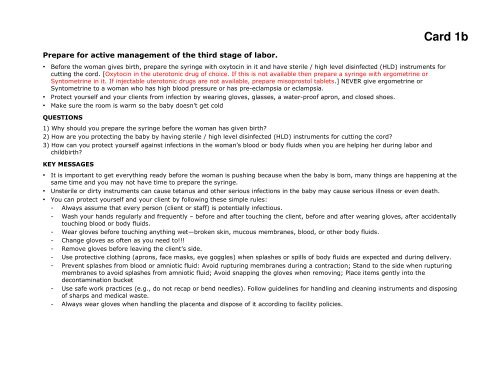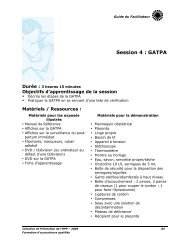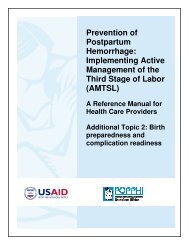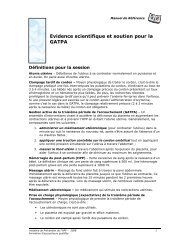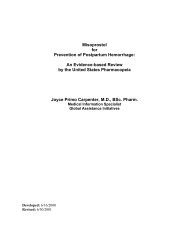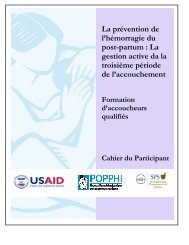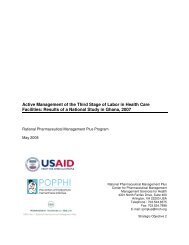English version PDF - POPPHI
English version PDF - POPPHI
English version PDF - POPPHI
Create successful ePaper yourself
Turn your PDF publications into a flip-book with our unique Google optimized e-Paper software.
Prepare for active management of the third stage of labor.• Before the woman gives birth, prepare the syringe with oxytocin in it and have sterile / high level disinfected (HLD) instruments forcutting the cord. [Oxytocin in the uterotonic drug of choice. If this is not available then prepare a syringe with ergometrine orSyntometrine in it. If injectable uterotonic drugs are not available, prepare misoprostol tablets.] NEVER give ergometrine orSyntometrine to a woman who has high blood pressure or has pre-eclampsia or eclampsia.• Protect yourself and your clients from infection by wearing gloves, glasses, a water-proof apron, and closed shoes.• Make sure the room is warm so the baby doesn’t get coldQUESTIONS1) Why should you prepare the syringe before the woman has given birth?2) How are you protecting the baby by having sterile / high level disinfected (HLD) instruments for cutting the cord?3) How can you protect yourself against infections in the woman’s blood or body fluids when you are helping her during labor andchildbirth?KEY MESSAGESCard 1b• It is important to get everything ready before the woman is pushing because when the baby is born, many things are happening at thesame time and you may not have time to prepare the syringe.• Unsterile or dirty instruments can cause tetanus and other serious infections in the baby may cause serious illness or even death.• You can protect yourself and your client by following these simple rules:- Always assume that every person (client or staff) is potentially infectious.- Wash your hands regularly and frequently – before and after touching the client, before and after wearing gloves, after accidentallytouching blood or body fluids.- Wear gloves before touching anything wet—broken skin, mucous membranes, blood, or other body fluids.- Change gloves as often as you need to!!!- Remove gloves before leaving the client’s side.- Use protective clothing (aprons, face masks, eye goggles) when splashes or spills of body fluids are expected and during delivery.- Prevent splashes from blood or amniotic fluid: Avoid rupturing membranes during a contraction; Stand to the side when rupturingmembranes to avoid splashes from amniotic fluid; Avoid snapping the gloves when removing; Place items gently into thedecontamination bucket- Use safe work practices (e.g., do not recap or bend needles). Follow guidelines for handling and cleaning instruments and disposingof sharps and medical waste.- Always wear gloves when handling the placenta and dispose of it according to facility policies.


